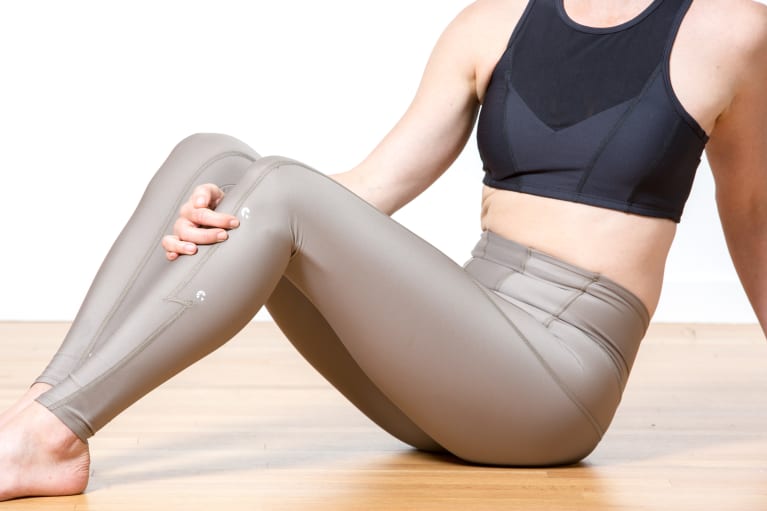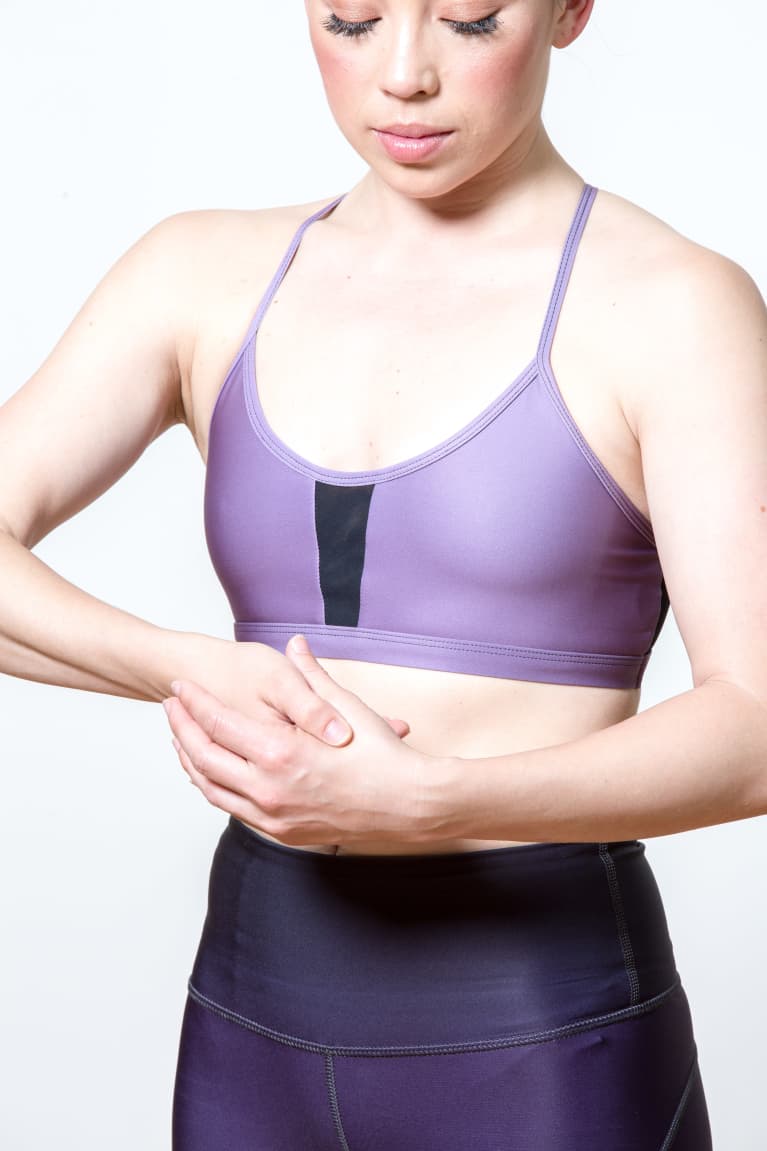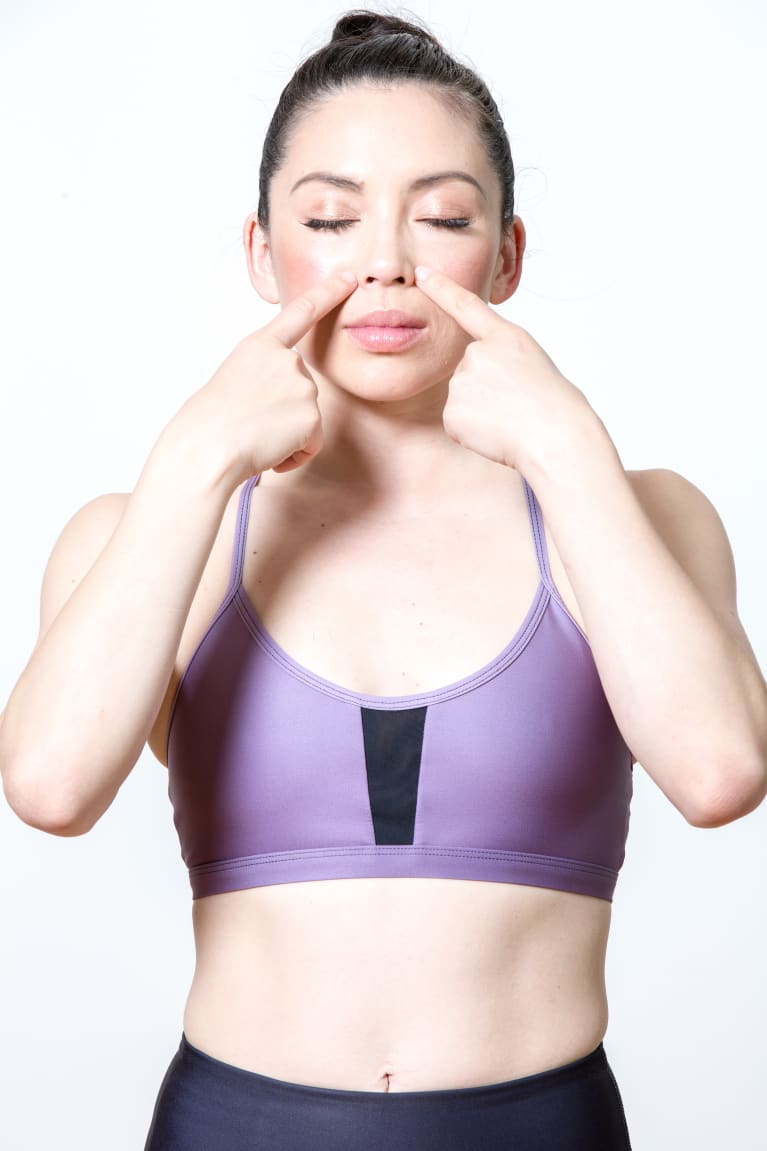In Traditional Chinese Medicine, allergies are thought to be a function of weakness in the Lung energy system, usually resulting from a deficiency in digestion; in TCM the Spleen energy system. TCM treatment involves supporting the Root (cause) while treating the Branch (symptoms) through modalities such as herbal remedies and acupuncture. When allergies strike, though, we don’t always have time for a full acupuncture session; luckily, you can find some relief on your own by pressing on specific acupressure points.
It’s springtime! And just as you are ready to reemerge into the world, so, too, is the local flora—and for many, that means allergies.
If you’re feeling the seasonal sniffles, these acupressure points can help stave off some misery and support your body as it processes the new growth of the season.
How acupressure can help with allergies.
Acupressure is a time-tested Chinese medicine practice that massages specific points on the body to lead to the desired effects.
Points are located in patterns on the surface of your body, and when you connect all these points (like a road map with stops along the way), you will see that they follow specific pathways that we can think of as energy channels. Each point is thought to connect to particular organs and body parts—including those activated in the allergy response.
Perhaps best of all, you don’t need anything fancier than your own hands and a little space to move in order to feel the benefits of this practice.
Some tips as you get started:
- You have mirror points on the left and right sides of your body, so press on both sides!
- Acupressure can be most effective if you set aside time to relax and focus on the experience (although it can also be done on the go).
- Hold each point for 30 to 90 seconds.
- Trust your instincts: Notice where you are drawn to press. Oftentimes, our bodies know what they need more than we realize.
Try these points this spring:
Stomach 36
This is a go-to point for many acupuncturists, used to help tonify your chi (life force energy), warm up your stomach and lungs, and strengthen a particular type of chi known as defensive chi. It can help your body move through stuck energy and the stagnation of allergy season.
Find it about four fingerprints below your kneecap and slightly to the outside of your knee.

Large Intestine 4
This point is commonly used to help ease pressure in the head and face. (You might have tried it for a headache before.) Practitioners also refer to it to help alleviate red, itchy eyes; heat in the face; sinus troubles; and neck tension. Like ST 36, LI-4 is also credited with boosting your body’s defensive chi. It’s popular for its ability to clean and to move chi in a way that helps to release stagnation.
Find it on the back of your hand, in the V crease that forms between your thumb and index finger.
Note: Skip this one if pregnant.

Large Intestine 20
This point can be great for short-term relief from allergy symptoms. Also known as the “Welcome Fragrance” point, it helps to open your nasal passage and immediately relieve some sinus pressure.
Find it on your face, to the sides of your nasolabial folds (just to the outside of the nostril). Try pressing both points of the nose at once and breathing deeply through your nose as you go.

If you have tried these acupoints at home and are still struggling with spring allergies, acupuncture might be a better fit for you. Acupuncture is more precise than acupressure, and the metal of the needle acts as a conductor for the vital energy or Qi that runs in the Channels. The insertion of acupuncture needles can help alleviate symptoms such as pain and inflammation — a major contributing factor to seasonal allergies. Acupuncture combined with herbal remedies that help balance the system can be effective in relieving allergies and getting you back to your favourite outdoor activity.
Email us at info@evolvevancouver.ca to learn more or to book an appointment with Dr. Peter Wood Dr. TCM, R.Ac.